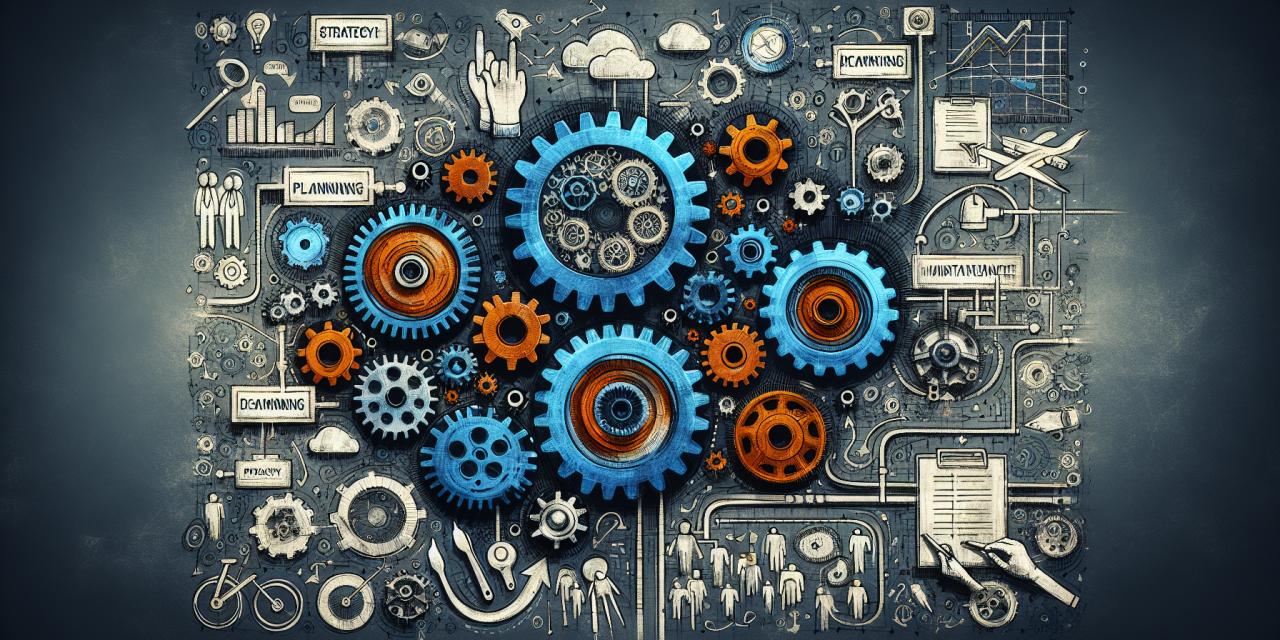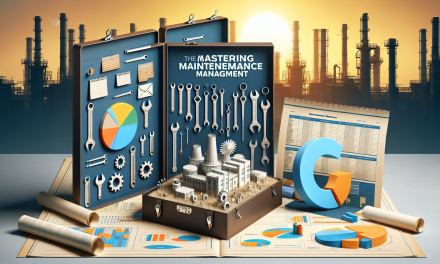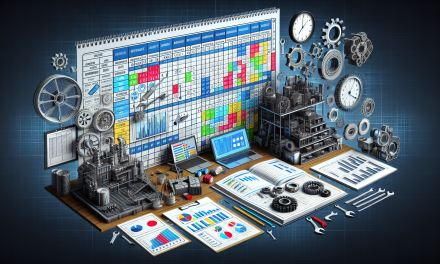Table of Contents
- Introduction
- The Importance of Maintenance Planning
- Building an Effective Maintenance Planning System
- Creating a Competent Maintenance Team
- Overcoming Challenges in Maintenance Planning
- Best Practices in Maintenance Planning
- FAQs
- Conclusion
Introduction
In today’s fast-paced industrial environment, effective maintenance planning has never been more critical. Organizations are under constant pressure to ensure operational efficiency, minimize downtime, and extend the life of their assets. Yet, maintaining a reliable and systematic approach to maintenance planning poses challenges. By establishing a cohesive planning system and fostering a skilled team, organizations can navigate these challenges effectively.
The Importance of Maintenance Planning
Effective maintenance planning streamlines processes, maximizes asset lifespan, and ultimately boosts productivity. When teams care for equipment proactively, organizations witness a remarkable decrease in unplanned breakdowns. This, in turn, reduces costs and enhances overall safety within the workplace. Furthermore, maintenance planning forms a foundation for strategic decision-making.
Building an Effective Maintenance Planning System
Creating a solid maintenance planning system consists of a few pivotal elements. First and foremost, assess the unique maintenance needs of the organization. This evaluation guides subsequent decisions and strategies.
Assessing Maintenance Needs
Assessing needs involves analyzing current equipment performance, understanding failure patterns, and identifying critical assets. Collecting data through inspections, maintenance records, and sensor data is essential. The gathered insights help in prioritizing maintenance tasks effectively and determining resource allocation.
Setting Clear Goals
After identifying the maintenance needs, set clear and achievable goals. For instance, objectives might entail minimizing equipment downtime by a specific percentage or extending the lifespan of particular machinery. By having measurable goals, teams can track progress and make necessary adjustments.
Utilizing Technology and Tools
The integration of technology has revolutionized maintenance planning. Advanced tools like Computerized Maintenance Management Systems (CMMS), predictive maintenance software, and mobile applications facilitate effective scheduling, tracking, and reporting. By utilizing these tools, the team can transition from reactive to proactive maintenance strategies. If you’re interested in diving deeper into using technology for maintenance, consider exploring the Effective Maintenance Planning & Scheduling Course Certification for ideas and frameworks.
Creating a Competent Maintenance Team
A proficient maintenance planning system is only as strong as the team behind it. Therefore, focusing on competency and collaboration is paramount.
Recruiting the Right Talent
Recruitment plays a vital role in building a competent maintenance team. Highlight technical skills when sourcing candidates but don’t underestimate the importance of soft skills like teamwork, communication, and adaptability. A diverse team brings different perspectives that enhance problem-solving capabilities.
Training and Development
Upon forming the team, invest in continuous training and development. Regular training sessions ensure that team members stay up-to-date with the latest maintenance techniques and technologies. One effective way to enhance skills is through advanced training programs such as the Mastering the Art of Advanced Maintenance Planning and Scheduling, which incorporates innovative strategies and methods.
Fostering a Culture of Safety and Improvement
Promoting a culture of safety and continuous improvement is vital for any maintenance team. Encourage open communication about safety practices and foster an environment where team members feel comfortable sharing ideas for process improvements. This sense of ownership leads to enhanced motivation and job satisfaction.
Overcoming Challenges in Maintenance Planning
Even with a solid maintenance plan, challenges may arise. These can include unexpected equipment failures, budget constraints, and resistance to change from team members. Addressing these challenges requires a combination of flexibility, strategic planning, and strong leadership. Resolving these challenges ensures that maintenance planning remains a priority across the organization.
Best Practices in Maintenance Planning
Here are some essential best practices that can enhance your maintenance planning efforts:
- Prioritize Preventive Maintenance: Shift focus from reactive to preventive maintenance by scheduling regular inspections and servicing.
- Involve Stakeholders: Engage different departments in planning to showcase the benefits of maintenance activities.
- Document Everything: Keep detailed records of maintenance activities and inspections to track progress and identify patterns.
- Leverage Data Analytics: Utilize analytics to derive insights from maintenance data for continual improvement.
- Stay Flexible: Adapt the plan based on real-time data and re-evaluate priorities regularly.
FAQs
1. What is the best way to assess maintenance needs?
Assess maintenance needs by systematically collecting data on equipment performance, reviewing maintenance logs, and analyzing breakdown patterns. This information helps prioritize tasks based on urgency and resource availability.
2. How can technology improve maintenance planning?
Technology streamlines scheduling, tracking, and reporting activities. Tools like CMMS enable teams to automate maintenance processes, keep detailed records, and facilitate communication.
3. Why is training vital for maintenance teams?
Training empowers team members with necessary skills and knowledge, ensuring they can effectively address maintenance issues. Regular training also promotes confidence and fosters a culture of continuous improvement.
4. How do you foster a culture of safety?
Promote safety by providing consistent training, encouraging open dialogue about safety issues, and rewarding safe practices. Recognizing employees for their commitment to safety can help reinforce its importance.
Conclusion
In conclusion, successful maintenance planning hinges on creating an effective planning system and cultivating a skilled team. By assessing needs, investing in technology, recruiting talent, and fostering a supportive culture, organizations can navigate the complexities of maintenance management. Although challenges will emerge, a proactive approach will lead to a resilient and efficient operation, setting the stage for ongoing success. To further enhance your organization’s maintenance strategies, explore insightful articles like Unlocking the Secrets of Effective Maintenance and Mastering Shutdowns, Turnarounds, and Outages.





